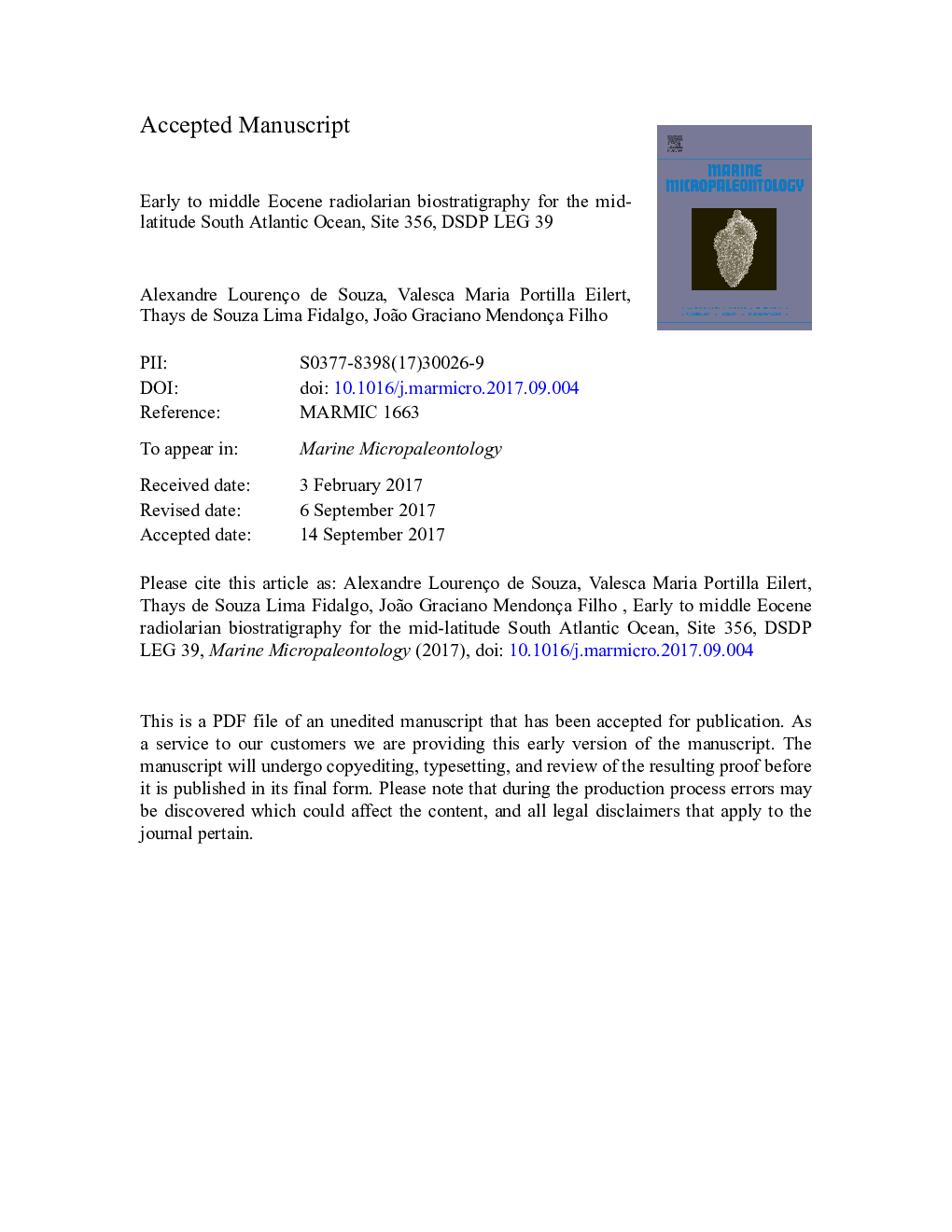| Article ID | Journal | Published Year | Pages | File Type |
|---|---|---|---|---|
| 5788179 | Marine Micropaleontology | 2017 | 28 Pages |
Abstract
Radiolarian assemblages from mid-latitude Site 356, drilled on the São Paulo Plateau, Santos Basin, South Atlantic, are studied in this work. A total of 124 radiolarian events from the early to middle Eocene are identified at this site. As a consequence of a lithological change at 218.50 mbsf, a decline in both radiolarian preservation and abundance was noticed. Previous lithological analyses carried out at this site revealed a hiatus from the uppermost middle Eocene to the lowermost Miocene. This hiatus is substantiated by the stratigraphic distribution of radiolarian assemblages. The standard radiolarian zonation for low latitudes is used for the Site 356 cores, and allowed the identification of the zones Podocyrtis (Lampterium) mitra (RP14), Podocyrtis (Podocyrtoges) ampla (RP13), Thyrsocyrtis triacantha (RP12), Dictyoprora mongolfieri (RP11) and Theocotyle cryptocephala (RP10), from the middle Eocene, and Phormocyrtis striata striata (RP9) from the early Eocene. The biostratigraphic results from the Eocene section at Site 356 in mid-latitude are compared to others from low and mid-latitudes, revealing that the range of some key species present differences relative to the tropics, and similarities to other studies from mid-latitudes.
Related Topics
Physical Sciences and Engineering
Earth and Planetary Sciences
Palaeontology
Authors
Alexandre Lourenço de Souza, Valesca Maria Portilla Eilert, Thays de Souza Lima Fidalgo, João Graciano Mendonça Filho,
